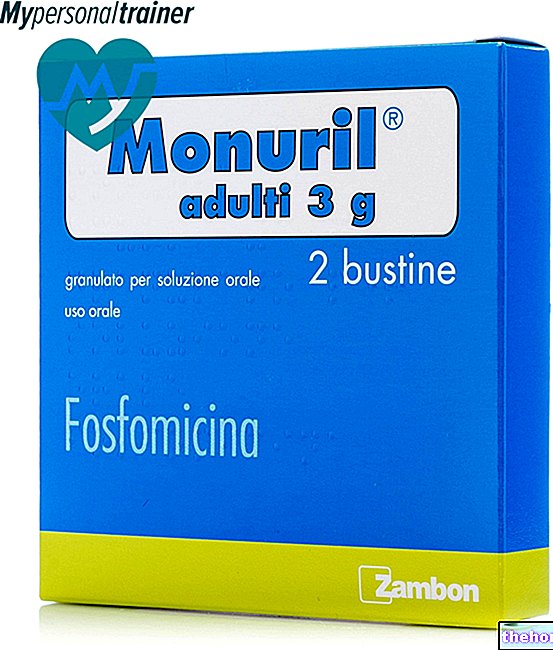Active ingredients: Tamsulosin
ANTUNES 0.4 mg modified-release capsules
Why is Antunes used? What is it for?
PHARMACOTHERAPEUTIC CATEGORY
ANTUNES is a drug with alpha1 adrenergic receptor blocking activity that reduces muscle tension in the prostate and urethra by facilitating urination.
Therapeutic indications
Lower urinary tract symptoms associated with benign prostatic hyperplasia.
Contraindications When Antunes should not be used
Hypersensitivity to tamsulosin hydrochloride, including drug induced angioedema, or to any of the excipients.
Severe hepatic insufficiency.
Previous episodes of orthostatic hypotension.
Precautions for use What you need to know before taking Antunes
As with other α1 adrenoceptor antagonists, during treatment with ANTUNES, a reduction in blood pressure may occur in particular cases which, rarely, can lead to syncope. At the first signs of orthostatic hypotension (dizziness, weakness) the patient should sit or lie down until the symptoms disappear.
In the chronic use of the product a periodic medical check-up is advisable.
Treatment of patients with severe renal impairment (creatinine clearance less than 10 ml / min) should be considered with caution as the medicinal product has not been studied in these subjects.
Interactions Which drugs or foods can change the effect of Antunes
Interaction studies have only been performed in adults.
No interactions were noted when tamsulosin hydrochloride was taken concomitantly with atenolol, enalapril or theophylline.
The concomitant use of cimetidine causes an increase in plasma tamsulosin levels while furosemide lowers them; however, the plasma concentration levels of tamsulosin are within the therapeutic range and therefore no dosage adjustment is necessary.
In vitro diazepam, propranolol, trichlormethiazide, chlormadinone, amitriptyline, diclofenac, glibenclamide, simvastatin and warfarin do not cause changes in the free fraction of tamsulosin in human plasma. Tamsulosin does not modify the free fraction of diazepam, propanolol, trichlormethiazide and chlormadinone.
In in vitro studies with hepatic microsomal fractions (representative of the drug metabolizing enzyme system linked to cytochrome P450) with amitriptyline, salbutamol, glibenclamide and finasteride there was no evidence of interactions at the level of hepatic metabolism.
However, diclofenac and warfarin can increase the elimination rate of tamsulosin.
Concomitant administration of tamsulosin hydrochloride and strong CYP3A4 inhibitors may lead to increased exposure to tamsulosin hydrochloride. Concomitant administration with ketoconazole (a known strong inhibitor of CYP3A4) resulted in an increase in the AUC and Cmax of tamsulosin hydrochloride by a factor of 2.8 and 2.2, respectively.
Tamsulosin hydrochloride should not be administered in combination with strong inhibitors of CYP3A4 in patients with a poor metabolising CYP2D6 phenotype.
Tamsulosin hydrochloride should be used with caution in combination with strong and moderate inhibitors of CYP3A4.
Concomitant administration of tamsulosin hydrochloride and paroxetine, a strong inhibitor of CYP206, resulted in an increase in Cmax and AUC of tamsulosin by a factor of 1.3 and 1.6, respectively, but these increases are not considered clinically relevant. .
Concomitant use of other α1-adrenoceptor antagonists may lead to hypotensive effects.
Arbitrarily combining different drugs can in general have harmful consequences, so it is advisable for the patient to inform their doctor of any other ongoing therapies.
Tell your doctor or pharmacist if you have recently taken any other medicines, even those without a prescription.
Warnings It is important to know that:
"Intraoperative Floppy Iris Syndrome" (IFIS, a variant of small pupil syndrome) has been observed in some patients on or previously treated with tamsulosin hydrochloride during cataract surgery. ISIF may increase the risk of ocular complications during and after surgery. Therefore it is recommended not to initiate treatment with tamsulosin in patients scheduled for cataract surgery.
Discontinuation of tamsulosin hydrochloride 1-2 weeks prior to cataract surgery is considered empirically useful, however the benefit of discontinuing treatment has not yet been established.
IFIS has also been found in patients who had stopped tamsulosin for a longer period prior to cataract surgery.
It is not recommended to initiate therapy with tamsulosin hydrochloride in patients for whom cataract surgery is planned. During the pre-operative evaluation, the ophthalmologist and the surgical team should consider whether the patient awaiting surgery is being treated or has been treated with tamsulosin to ensure that appropriate measures can be taken to manage. IFIS during the intervention.
Tamsulosin hydrochloride should not be administered in combination with strong inhibitors of CYP3A4 in patients with a poor metabolising CYP2D6 phenotype.
Tamsulosin hydrochloride should be used with caution in combination with strong and moderate inhibitors of CYP3A4 (see section 4.5).
It is possible that residues of the tablet will be found in the faeces.
Pregnancy and breastfeeding
The use of ANTUNES is not indicated in women.
Ejaculation disorders have been observed in short- and long-term clinical trials with tamsulosin hydrochloride. Cases of ejaculation disorders, retrograde ejaculation and inability to ejaculate have been reported in post-authorization studies.
Driving and using machines
No studies on the ability to drive and use machines have been performed. In this regard, however, the patient should be aware of the possibility that dizziness may develop.
Dosage and method of use How to use Antunes: Dosage
One capsule per day to be taken after breakfast or after the first meal of the day.
The capsule must be swallowed whole and must not be crushed or chewed as this could interfere with the controlled release of the active ingredient.
Overdose What to do if you have taken too much Antunes
Symptoms No cases of overdose have been reported.
Overdose with tamsulosin hydrochloride can potentially lead to severe hypotensive effects.
Severe hypotensive effects were observed at different levels of overdose.
Treatment
In the case of acute hypotension following overdose, prompt action should be taken to support the cardiovascular system.
Blood pressure and heart rate can be restored to normal by having the patient lie down.
If this is not enough, volume expanders and, if necessary, vasoconstrictive drugs can be used. Renate function should be monitored and general supportive measures applied Dialysis is of little use as tamsulosin binds strongly to plasma proteins.
Some measures such as emesis can be taken to prevent absorption.
In case of ingestion of large doses, gastric lavage may be useful and activated charcoal and an osmotic laxative, such as sodium sulfate, can be administered.
In case of accidental ingestion of an excessive dose of Antunes, notify your doctor immediately or go to the nearest hospital.
What to do if you have forgotten to take one or more doses
If the patient has forgotten to take the daily dose, it can be taken later in the day.
If a day of treatment has been skipped, it is advisable to continue the therapy as usual, according to the medical prescription.
If you have any further questions on the use of Antunes, ask your doctor or pharmacist.
Side Effects What are the side effects of Antunes
Like all medicines, Antunes can cause side effects, although not everybody gets them.
The following side effects have been reported with the use of Antunes:
A variant of the small pupil syndrome known as the "Intraoperative Floppy Iris Syndrome (IFIS)" associated with tamsulosin therapy has been observed during cataract surgery during the postmarketing surveillance period (see also section 4.4 "Special warnings and precautions for use"). Post-marketing experience: In addition to the adverse events listed above, atrial fibrillation, arrhythmia, tachycardia and dyspnoea have been reported in association with the use of tamsulosin. Since these spontaneously reported events come from post-marketing experience worldwide, their frequency and the role of tamsulosin in causing them cannot be determined with certainty.
If any of the side effects gets serious, or if you notice any side effects not listed in this leaflet, please inform your doctor or pharmacist.
Expiry and Retention
Check the expiration date indicated on the package.
The expiry date indicated refers to the product in intact packaging, correctly stored.
Store at a temperature not exceeding 25 ° C.
Warning: do not use the medicine after the expiry date indicated on the package.
DO NOT USE IN CASE OF EVIDENT SIGNS OF DETERIORATION.
Medicines should not be disposed of via wastewater or household waste. Ask your pharmacist how to dispose of medicines you no longer use. This will help protect the environment.
KEEP THE MEDICINAL PRODUCT OUT OF THE REACH AND SIGHT OF CHILDREN
COMPOSITION
One capsule contains:
Active ingredient: tamsulosin hydrochloride 0.4 mg;
Excipients: sodium alginate; methylacrylic acid-ethylacrylate copolymer (1: 1); Glycerol dibeenate; maltodextrin; sodium lauryl sulfate; magrogol; polysorbate 80; sodium hydroxide, simethicone; anhydrous colloidal silica;
Capsule: gelatin; purified water; red iron oxide (E172); titanium dioxide (E171); yellow iron oxide (E172).
PHARMACEUTICAL FORM AND CONTENT
Modified-release capsule, hard - Box of 20 capsules in blister packs
Source Package Leaflet: AIFA (Italian Medicines Agency). Content published in January 2016. The information present may not be up-to-date.
To have access to the most up-to-date version, it is advisable to access the AIFA (Italian Medicines Agency) website. Disclaimer and useful information.
01.0 NAME OF THE MEDICINAL PRODUCT
ANTUNES
02.0 QUALITATIVE AND QUANTITATIVE COMPOSITION
Each capsule contains, active principle: tamsulosin hydrochloride 0.4 mg.
For the full list of excipients, see section 6.1
03.0 PHARMACEUTICAL FORM
Modified-release hard capsules.
04.0 CLINICAL INFORMATION
04.1 Therapeutic indications
Lower Urinary Tract Symptoms (LUTS) associated with benign prostatic hyperplasia (BPH).
04.2 Posology and method of administration
One capsule per day to be taken after breakfast or after the first meal of the day. The capsule should be swallowed whole.
The capsules should not be crushed or chewed as this could interfere with the controlled release of the active ingredient.
04.3 Contraindications
Hypersensitivity to the active substance or to any of the excipients.
History of orthostatic hypotension.
Severe hepatic insufficiency.
04.4 Special warnings and appropriate precautions for use
As with other alpha1 blockers, during treatment with tamsulosin, a reduction in blood pressure may occur in particular cases which, rarely, can lead to syncope. At the first signs of orthostatic hypotension (dizziness, weakness) the patient should sit or lie down until the symptoms disappear.
Before starting tamsulosin therapy, the patient should be evaluated for other conditions that may cause the same symptoms as benign prostatic hyperplasia. Rectal examination and, if necessary, determination of prostate specific antigen (PSA ) should be performed before treatment and at regular intervals thereafter.
The treatment of patients with severe renal insufficiency (creatinine clearance less than 10 ml / min) should be considered with caution as these subjects have not been studied.
During cataract surgery some patients, previously treated or treated with drugs containing tamsulosin, have experienced the IFIS "Intraoperative Floppy Iris Syndrome" known as "floppy iris". The appearance of this syndrome may increase surgical complications during surgery. Therefore it is recommended not to initiate treatment with tamsulosin in patients awaiting cataract surgery.
Anecdotal experiences have shown that stopping tamsulosin treatment 1 or 2 weeks prior to surgery may help. However, the benefit of stopping and the necessary stopping period have not yet been established.
In the pre-operative evaluation phase, the physician must investigate whether the patient intended for surgery is or has been under treatment with tamsulosin in order to ensure appropriate measures for the management of IFIS during the operation.
04.5 Interactions with other medicinal products and other forms of interaction
No interactions were noted when tamsulosin was taken concomitantly with atenolol, enalapril, nifedipine or theophylline.
The concomitant use of cimetidine causes an increase in plasma tamsulosin levels while furosemide lowers them; in both cases, however, within normal limits that do not make a modification of the dosage necessary.
In vitro diazepam, propranolol, trichlormethiazide, chlormadinone, amitriptyline, diclofenac, glibenclamide, simvastatin and warfarin do not change the free fraction of tamsulosin in human plasma. Tamsulosin does not modify the free fraction of diazepam, propanolol, trichlormethiazide and chlormadinone.
In in vitro studies with hepatic microsomal fractions (representative of the drug metabolizing enzyme system linked to cytochrome P450) with amitriptyline, salbutamol, glibenclamide and finasteride there was no evidence of interactions at the level of hepatic metabolism. However, diclofenac and warfarin may increase the elimination rate of tamsulosin.
Concomitant use of other alpha1-adrenoceptor antagonists may lead to hypotensive effects.
04.6 Pregnancy and lactation
Not relevant as ANTUNES is for use in male patients only.
04.7 Effects on ability to drive and use machines
There are no data showing the influence of ANTUNES on the ability to drive and use machines. In this regard, however, the patient should be aware of the possibility of vertigo occurring.
04.8 Undesirable effects
Common (>1%,
• Nervous system disorders: dizziness (1.3%).
Uncommon (>0.1%,
• Nervous system disorders: headache.
• Cardiac disorders: palpitations.
• Vascular disorders: postural hypotension.
• Respiratory, thoracic and mediastinal disorders: rhinitis.
• Gastrointestinal disorders: diarrhea, nausea, vomiting, constipation.
• Skin and subcutaneous tissue disorders: skin rash, itching, urticaria.
• Reproductive system and breast disorders: abnormal ejaculation.
• General disorders and administration site conditions: asthenia.
Rare (>0,01%,
• Nervous system disorders: syncope.
• Skin and subcutaneous tissue disorders: angioedema.
Very rare (>0,01%)
• Reproductive system and breast disorders: priapism.
Cases of "Intraoperative Floppy Iris Syndrome" known as "Floppy Iris" associated with tamsulosin treatment have been reported during cataract surgery ((See section 4.4 Special warnings and precautions for use).
04.9 Overdose
No cases of overdose have been reported.
However, theoretically, in the event of an overdose, acute hypotension could occur, which would therefore require prompt cardiovascular action.
Blood pressure and heart rate can be restored to normal by having the patient lie down.
If this is not enough, plasma exparders and, if necessary, drugs with vasoconstrictive action can be administered. In addition to general supportive measures, renal function should be monitored.
Dialysis is of little use as tamsulosin binds strongly to plasma proteins.
Some measures such as emesis can be taken to prevent absorption.
In case of ingestion of large doses, gastric lavage can be useful and activated charcoal and an osmotic laxative, such as sodium sulfate, can be administered.
05.0 PHARMACOLOGICAL PROPERTIES
05.1 Pharmacodynamic properties
Pharmacotherapeutic group: alpha1 adrenoceptor antagonist.
ATC code: G04A02. Drugs for the exclusive treatment of prostate disorders - Tamsulosin.
Mechanism of action
Tamsulosin selectively and competitively binds to postsynaptic alpha1 adrenoceptors, particularly the alpha1A and alpha1D subtypes. which cause the smooth muscle relaxation of the prostate and urethra.
Pharmacodynamic effects
Tamsulosin 0.4 mg increases the maximum urinary flow. Relieves obstruction by relaxing the smooth muscle in the prostate and urethra, thereby improving voiding symptoms.
It also improves filling symptoms, in which bladder instability plays an important role.
These effects on filling and voiding symptoms are maintained during long-term therapy. The need for surgery or catheterization is significantly delayed.
Alpha1 blockers can reduce blood pressure by reducing peripheral resistance. No clinically significant reduction in blood pressure was observed during clinical trials with tamsulosin.
05.2 "Pharmacokinetic properties
Absorption
Tamsulosin is absorbed from the intestine and is almost completely bioavailable.
Absorption is reduced with intake close to meals.
Uniform absorption can be achieved if the patient always takes ANTUNES after the usual breakfast.
Tamsulosin exhibits linear kinetics.
After a single dose of tamsulosin in fed state, plasma levels of tamsulosin peak in approximately 6 hours and, in steady state conditions, which are reached after 5 days of treatment, Cmax is approximately 2/3 higher than that achieved. after single dose.
This has been noted in elderly patients and it is reasonable to expect the same in younger patients.
There is considerable individual variation in plasma levels after both single and repeat dosing.
Distribution
In humans, tamsulosin is approximately 99% bound to plasma proteins and the volume of distribution is low (approximately 0.2 l / kg).
Biotransformation
Tamsulosin has a poor first pass effect as it is metabolized slowly.
Tamsulosin is present in plasma mainly in the form of unchanged drug.
It is metabolized in the liver.
Virtually no induction of the microsomal liver enzyme system was observed in the rat.
Mild to moderate hepatic impairment requires no dosage adjustment (see also section 4.3).
None of the metabolites are more active than the original product.
Excretion
Tamsulosin and its metabolites are eliminated mainly in the urine and approximately 9% of the drug taken is eliminated in the unchanged form.
After a single 0.4 mg dose of tamsulosin in fed and steady state conditions, the elimination half-life was evaluated at 10 and 13 hours, respectively.
05.3 Preclinical safety data
Single and repeat dose toxicity studies were performed in mice, rats and dogs. Reproduction studies in rats, carcinogenicity studies in mice and rats, genotoxicity studies were also considered. in vitro and in I live.
The general toxicological profile as ascertained with higher doses of tamsulosin is consistent with the known pharmacological activity of alpha-adrenergic blocking drugs.
In dogs, at very high doses, the electrocardiogram is changed. This response is considered not clinically relevant.
Tamsulosin did not show relevant genotoxic properties.
An "increased incidence of proliferative changes in the udder of rats and female mice has been reported. These findings, which are likely mediated by hyperprolactinaemia and only occur at high doses, are considered irrelevant."
06.0 PHARMACEUTICAL INFORMATION
06.1 Excipients
Sodium alginate; methylacrylic acid-ethylacrylate copolymer (1: 1); glycerol dibeenate; maltodextrin; sodium lauryl sulfate; magrogol; polysorbate 80; sodium hydroxide; simethicone; anhydrous colloidal silica.
Capsule: jelly; purified water; red iron oxide (E172); titanium dioxide (E171); yellow iron oxide (E172).
06.2 Incompatibility
Not relevant.
06.3 Period of validity
3 years.
06.4 Special precautions for storage
Store at a temperature not exceeding 25 ° C.
06.5 Nature of the immediate packaging and contents of the package
PVC / PVDC / AL blister. Pack containing 20 capsules.
06.6 Instructions for use and handling
No special instructions.
Unused product and waste derived from this medicine must be disposed of in accordance with local legal requirements.
07.0 MARKETING AUTHORIZATION HOLDER
So.Se.PHARM S.r.l.
Via dei Castelli Romani, 22 - 00040 Pomezia (RM).
08.0 MARKETING AUTHORIZATION NUMBER
ANTUNES "0.4 mg modified-release capsules, hard" 20 capsules - AIC n. 036908010
09.0 DATE OF FIRST AUTHORIZATION OR RENEWAL OF THE AUTHORIZATION
10.0 DATE OF REVISION OF THE TEXT
11.0 FOR RADIO DRUGS, COMPLETE DATA ON THE INTERNAL RADIATION DOSIMETRY
12.0 FOR RADIO DRUGS, FURTHER DETAILED INSTRUCTIONS ON EXEMPORARY PREPARATION AND QUALITY CONTROL
01.0 NAME OF THE MEDICINAL PRODUCT
ANTUNES
02.0 QUALITATIVE AND QUANTITATIVE COMPOSITION
Each capsule contains, active principle: tamsulosin hydrochloride 0.4 mg.
For the full list of excipients, see section 6.1
03.0 PHARMACEUTICAL FORM
Modified-release hard capsules.
04.0 CLINICAL INFORMATION
04.1 Therapeutic indications
Lower Urinary Tract Symptoms (LUTS) associated with benign prostatic hyperplasia (BPH).
04.2 Posology and method of administration
One capsule per day to be taken after breakfast or after the first meal of the day. The capsule should be swallowed whole.
The capsules should not be crushed or chewed as this could interfere with the controlled release of the active ingredient.
04.3 Contraindications
Hypersensitivity to the active substance or to any of the excipients.
History of orthostatic hypotension.
Severe hepatic insufficiency.
04.4 Special warnings and appropriate precautions for use
As with other alpha1 blockers, during treatment with tamsulosin, a reduction in blood pressure may occur in particular cases which, rarely, can lead to syncope. At the first signs of orthostatic hypotension (dizziness, weakness) the patient should sit or lie down until the symptoms disappear.
Before starting tamsulosin therapy, the patient should be evaluated for other conditions that may cause the same symptoms as benign prostatic hyperplasia. Rectal examination and, if necessary, determination of prostate specific antigen (PSA ) should be performed before treatment and at regular intervals thereafter.
The treatment of patients with severe renal insufficiency (creatinine clearance less than 10 ml / min) should be considered with caution as these subjects have not been studied.
During cataract surgery some patients, previously treated or treated with drugs containing tamsulosin, have experienced the IFIS "Intraoperative Floppy Iris Syndrome" known as "floppy iris". The appearance of this syndrome may increase surgical complications during surgery. Therefore it is recommended not to initiate treatment with tamsulosin in patients awaiting cataract surgery.
Anecdotal experiences have shown that stopping tamsulosin treatment 1 or 2 weeks prior to surgery may help. However, the benefit of stopping and the necessary stopping period have not yet been established.
In the pre-operative evaluation phase, the physician must investigate whether the patient intended for surgery is or has been under treatment with tamsulosin in order to ensure appropriate measures for the management of IFIS during the operation.
04.5 Interactions with other medicinal products and other forms of interaction
No interactions were noted when tamsulosin was taken concomitantly with atenolol, enalapril, nifedipine or theophylline.
The concomitant use of cimetidine causes an increase in plasma tamsulosin levels while furosemide lowers them; in both cases, however, within normal limits that do not make a modification of the dosage necessary.
In vitro diazepam, propranolol, trichlormethiazide, chlormadinone, amitriptyline, diclofenac, glibenclamide, simvastatin and warfarin do not change the free fraction of tamsulosin in human plasma. Tamsulosin does not modify the free fraction of diazepam, propanolol, trichlormethiazide and chlormadinone.
In in vitro studies with hepatic microsomal fractions (representative of the drug metabolizing enzyme system linked to cytochrome P450) with amitriptyline, salbutamol, glibenclamide and finasteride there was no evidence of interactions at the level of hepatic metabolism. However, diclofenac and warfarin may increase the elimination rate of tamsulosin.
Concomitant use of other alpha1-adrenoceptor antagonists may lead to hypotensive effects.
04.6 Pregnancy and lactation
Not relevant as ANTUNES is for use in male patients only.
04.7 Effects on ability to drive and use machines
There are no data showing the influence of ANTUNES on the ability to drive and use machines. In this regard, however, the patient should be aware of the possibility of vertigo occurring.
04.8 Undesirable effects
Common (>1%,
• Nervous system disorders: dizziness (1.3%).
Uncommon (>0.1%,
• Nervous system disorders: headache.
• Cardiac disorders: palpitations.
• Vascular disorders: postural hypotension.
• Respiratory, thoracic and mediastinal disorders: rhinitis.
• Gastrointestinal disorders: diarrhea, nausea, vomiting, constipation.
• Skin and subcutaneous tissue disorders: skin rash, itching, urticaria.
• Reproductive system and breast disorders: abnormal ejaculation.
• General disorders and administration site conditions: asthenia.
Rare (>0,01%,
• Nervous system disorders: syncope.
• Skin and subcutaneous tissue disorders: angioedema.
Very rare (>0,01%)
• Reproductive system and breast disorders: priapism.
Cases of "Intraoperative Floppy Iris Syndrome" known as "Floppy Iris" associated with tamsulosin treatment have been reported during cataract surgery ((See section 4.4 Special warnings and precautions for use).
04.9 Overdose
No cases of overdose have been reported.
However, theoretically, in the event of an overdose, acute hypotension could occur, which would therefore require prompt cardiovascular action.
Blood pressure and heart rate can be restored to normal by having the patient lie down.
If this is not enough, plasma exparders and, if necessary, drugs with vasoconstrictive action can be administered. In addition to general supportive measures, renal function should be monitored.
Dialysis is of little use as tamsulosin binds strongly to plasma proteins.
Some measures such as emesis can be taken to prevent absorption.
In case of ingestion of large doses, gastric lavage can be useful and activated charcoal and an osmotic laxative, such as sodium sulfate, can be administered.
05.0 PHARMACOLOGICAL PROPERTIES
05.1 Pharmacodynamic properties
Pharmacotherapeutic group: alpha1 adrenoceptor antagonist.
ATC code: G04A02. Drugs for the exclusive treatment of prostate disorders - Tamsulosin.
Mechanism of action
Tamsulosin selectively and competitively binds to postsynaptic alpha1 adrenoceptors, particularly the alpha1A and alpha1D subtypes. which cause the smooth muscle relaxation of the prostate and urethra.
Pharmacodynamic effects
Tamsulosin 0.4 mg increases the maximum urinary flow. Relieves obstruction by relaxing the smooth muscle in the prostate and urethra, thereby improving voiding symptoms.
It also improves filling symptoms, in which bladder instability plays an important role.
These effects on filling and voiding symptoms are maintained during long-term therapy. The need for surgery or catheterization is significantly delayed.
Alpha1 blockers can reduce blood pressure by reducing peripheral resistance. No clinically significant reduction in blood pressure was observed during clinical trials with tamsulosin.
05.2 "Pharmacokinetic properties
Absorption
Tamsulosin is absorbed from the intestine and is almost completely bioavailable.
Absorption is reduced with intake close to meals.
Uniform absorption can be achieved if the patient always takes ANTUNES after the usual breakfast.
Tamsulosin exhibits linear kinetics.
After a single dose of tamsulosin in fed state, plasma levels of tamsulosin peak in approximately 6 hours and, in steady state conditions, which are reached after 5 days of treatment, Cmax is approximately 2/3 higher than that achieved. after single dose.
This has been noted in elderly patients and it is reasonable to expect the same in younger patients.
There is considerable individual variation in plasma levels after both single and repeat dosing.
Distribution
In humans, tamsulosin is approximately 99% bound to plasma proteins and the volume of distribution is low (approximately 0.2 l / kg).
Biotransformation
Tamsulosin has a poor first pass effect as it is metabolized slowly.
Tamsulosin is present in plasma mainly in the form of unchanged drug.
It is metabolized in the liver.
Virtually no induction of the microsomal liver enzyme system was observed in the rat.
Mild to moderate hepatic impairment requires no dosage adjustment (see also section 4.3).
None of the metabolites are more active than the original product.
Excretion
Tamsulosin and its metabolites are eliminated mainly in the urine and approximately 9% of the drug taken is eliminated in the unchanged form.
After a single 0.4 mg dose of tamsulosin in fed and steady state conditions, the elimination half-life was evaluated at 10 and 13 hours, respectively.
05.3 Preclinical safety data
Single and repeat dose toxicity studies were performed in mice, rats and dogs. Reproduction studies in rats, carcinogenicity studies in mice and rats, genotoxicity studies were also considered. in vitro and in I live.
The general toxicological profile as ascertained with higher doses of tamsulosin is consistent with the known pharmacological activity of alpha-adrenergic blocking drugs.
In dogs, at very high doses, the electrocardiogram is changed. This response is considered not clinically relevant.
Tamsulosin did not show relevant genotoxic properties.
An "increased incidence of proliferative changes in the udder of rats and female mice has been reported. These findings, which are likely mediated by hyperprolactinaemia and only occur at high doses, are considered irrelevant."
06.0 PHARMACEUTICAL INFORMATION
06.1 Excipients
Sodium alginate; methylacrylic acid-ethylacrylate copolymer (1: 1); glycerol dibeenate; maltodextrin; sodium lauryl sulfate; magrogol; polysorbate 80; sodium hydroxide; simethicone; anhydrous colloidal silica.
Capsule: jelly; purified water; red iron oxide (E172); titanium dioxide (E171); yellow iron oxide (E172).
06.2 Incompatibility
Not relevant.
06.3 Period of validity
3 years.
06.4 Special precautions for storage
Store at a temperature not exceeding 25 ° C.
06.5 Nature of the immediate packaging and contents of the package
PVC / PVDC / AL blister. Pack containing 20 capsules.
06.6 Instructions for use and handling
No special instructions.
Unused product and waste derived from this medicine must be disposed of in accordance with local legal requirements.
07.0 MARKETING AUTHORIZATION HOLDER
So.Se.PHARM S.r.l.
Via dei Castelli Romani, 22 - 00040 Pomezia (RM).
08.0 MARKETING AUTHORIZATION NUMBER
ANTUNES "0.4 mg modified-release capsules, hard" 20 capsules - AIC n. 036908010




























